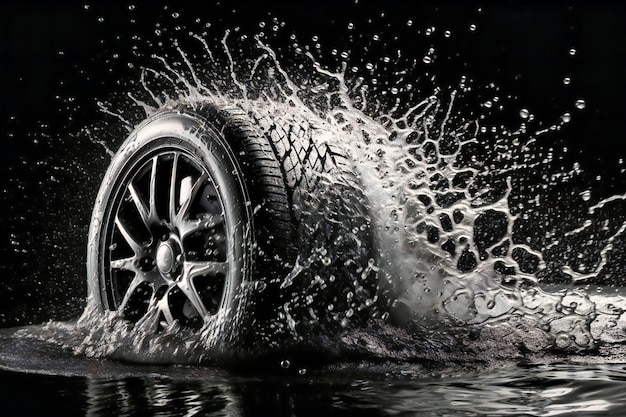
Hydroplaning, a phenomenon where a vehicle’s tires lose traction with the road due to a layer of water, poses a significant risk on wet roadways. The causes of hydroplaning are multifaceted, intertwining both natural elements and human factors. Rainfall and road conditions play a pivotal role, with the presence of water on the road surface being the primary catalyst.
When rainwater accumulates on the road, it forms a thin film that acts as a barrier between the tires and the pavement. The tires then struggle to displace this water, leading to a loss of contact with the road surface. The velocity of the vehicle also contributes to hydroplaning; higher speeds make it challenging for the tires to push water away effectively, increasing the likelihood of losing traction.
Tire tread depth is another crucial factor. Worn-out tires with shallow treads are less efficient at channeling water away, making vehicles more susceptible to hydroplaning. Proper tire maintenance, including regular inspection and replacement of worn tires, is essential to reduce this risk.
Beyond natural elements, driver behavior significantly influences the occurrence of hydroplaning. Sudden acceleration or deceleration, abrupt steering maneuvers, and aggressive driving can exacerbate the likelihood of hydroplaning. Additionally, inadequate tire inflation levels reduce the tire’s ability to grip the road, increasing the chances of losing control in wet conditions.
The mystery behind hydroplaning lies in the dynamic interaction between the tire, road, and water. The precise moment when hydroplaning occurs is not always predictable, as it depends on a combination of factors. Even with advancements in tire technology and vehicle design, hydroplaning remains a challenge to fully comprehend and prevent.
Researchers continually study hydroplaning to enhance safety measures and develop technologies that mitigate its effects. Anti-lock braking systems (ABS) and electronic stability control (ESC) are examples of advancements aimed at preventing or minimizing hydroplaning incidents. These systems work by modulating brake pressure and adjusting engine power to help the driver maintain control during slippery conditions.
Despite these advancements, the mystery persists, reminding us of the dynamic and complex nature of the interaction between tires and water on the road. To address the mystery comprehensively, ongoing research focuses on tire design, road surface improvements, and driver assistance technologies. Solving the mystery of hydroplaning requires a holistic approach, incorporating meteorology, vehicle dynamics, and human behavior.
In summary, hydroplaning is a complex phenomenon influenced by a combination of natural elements and human factors. Rainfall, road conditions, tire tread depth, and driver behavior all contribute to the risk of hydroplaning. While advancements in technology aim to mitigate its effects, the mystery behind the exact moment of hydroplaning remains, highlighting the need for ongoing research and comprehensive safety measures on wet roadways.